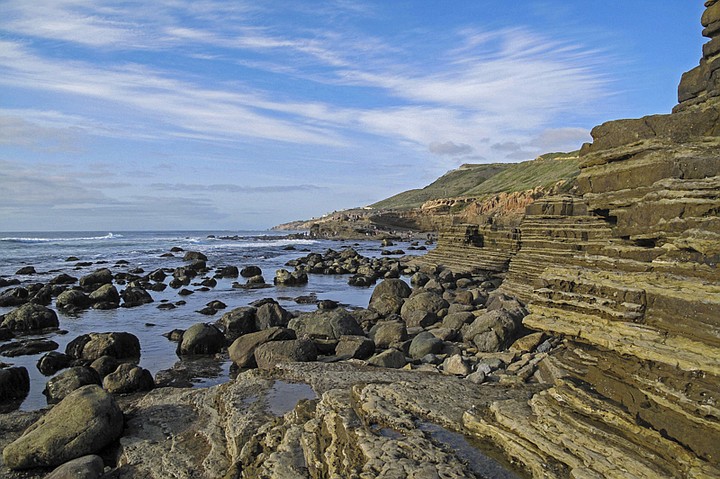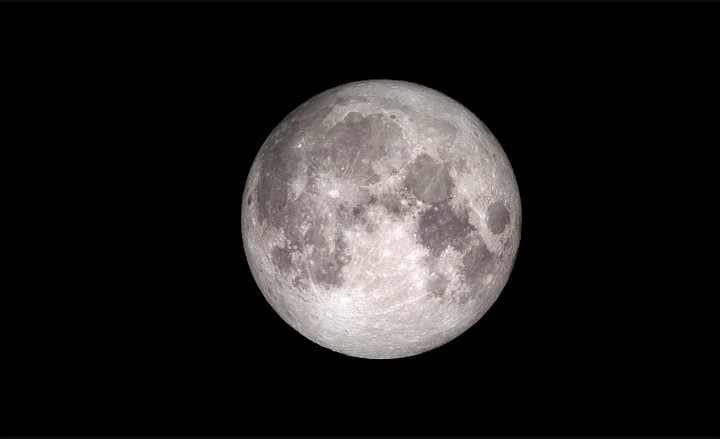 Facebook
Facebook
 X
X
 Instagram
Instagram
 TikTok
TikTok
 Youtube
Youtube

The Surf Scoter Is A Small Sea Duck that typically arrives in Southern California in the fall. By winter, they are the most common bird found in the San Diego Bay. Males are mostly black with a white, orange, and bright yellow bill. Females are slightly smaller and browner. They feed on clams, mussels and other invertebrates by diving more than 30 feet to the sea floor.

October’s Lowest Tides, arriving in the afternoon hours several days in a row, usher in several months of excellent tidepooling opportunities. A -1.05–foot tide occurs at 4:07 pm on Thursday, the 17th; a -1.21–foot tide occurs at 4:56 pm on Friday, the 18th. Saturday the 19th presents a great opportunity to visit the tide pools at 5:47 pm during the -1.08–foot low tide; you can also enjoy the sunset just 20 minutes later at 6:10 pm. The region’s best-known places to view intertidal life include Cabrillo National Monument and areas up the coast from La Jolla Cove.
Weather Permitting, You Can Watch The Full Moon rise majestically into the still-bright eastern sky just before sunset on Thursday, October 17. Like September’s Harvest Moon, the Hunter’s Moon rises at around the same time for several nights. This month's full Moon will orbit closer to the Earth than any other full Moon this year, making it a Supermoon. Also called a "perigean full Moon," it is technically bigger and brighter than a regular full Moon, but only by 7%.

Harvesting is another pre-winter activity, and it's worth noting that since the Harvest Moon is the full Moon that occurs nearest to the autumnal equinox (September 22, 2024), it could be either September or October’s full Moon. Similarly, the Hunter’s Moon is the first full Moon to follow the Harvest Moon, meaning it can occur in either October or November. This year, the Harvest Moon occurred on September 17, so the Hunter’s Moon follows one lunar cycle later, on October 17.


The Surf Scoter Is A Small Sea Duck that typically arrives in Southern California in the fall. By winter, they are the most common bird found in the San Diego Bay. Males are mostly black with a white, orange, and bright yellow bill. Females are slightly smaller and browner. They feed on clams, mussels and other invertebrates by diving more than 30 feet to the sea floor.

October’s Lowest Tides, arriving in the afternoon hours several days in a row, usher in several months of excellent tidepooling opportunities. A -1.05–foot tide occurs at 4:07 pm on Thursday, the 17th; a -1.21–foot tide occurs at 4:56 pm on Friday, the 18th. Saturday the 19th presents a great opportunity to visit the tide pools at 5:47 pm during the -1.08–foot low tide; you can also enjoy the sunset just 20 minutes later at 6:10 pm. The region’s best-known places to view intertidal life include Cabrillo National Monument and areas up the coast from La Jolla Cove.
Weather Permitting, You Can Watch The Full Moon rise majestically into the still-bright eastern sky just before sunset on Thursday, October 17. Like September’s Harvest Moon, the Hunter’s Moon rises at around the same time for several nights. This month's full Moon will orbit closer to the Earth than any other full Moon this year, making it a Supermoon. Also called a "perigean full Moon," it is technically bigger and brighter than a regular full Moon, but only by 7%.

Harvesting is another pre-winter activity, and it's worth noting that since the Harvest Moon is the full Moon that occurs nearest to the autumnal equinox (September 22, 2024), it could be either September or October’s full Moon. Similarly, the Hunter’s Moon is the first full Moon to follow the Harvest Moon, meaning it can occur in either October or November. This year, the Harvest Moon occurred on September 17, so the Hunter’s Moon follows one lunar cycle later, on October 17.
Comments